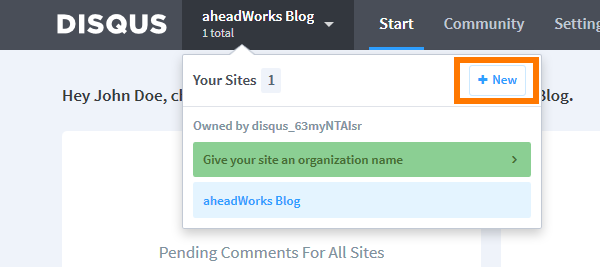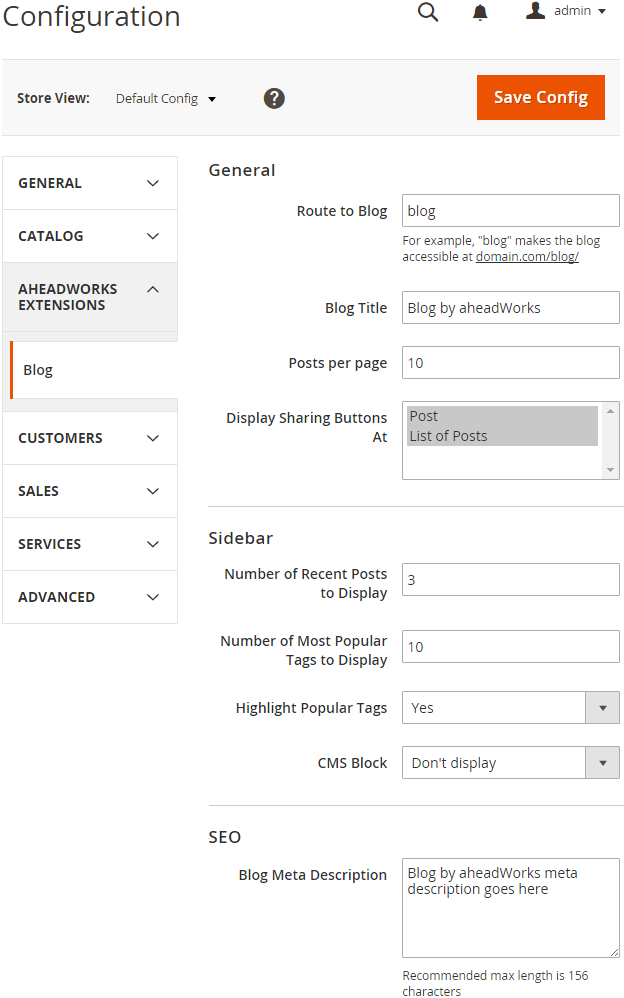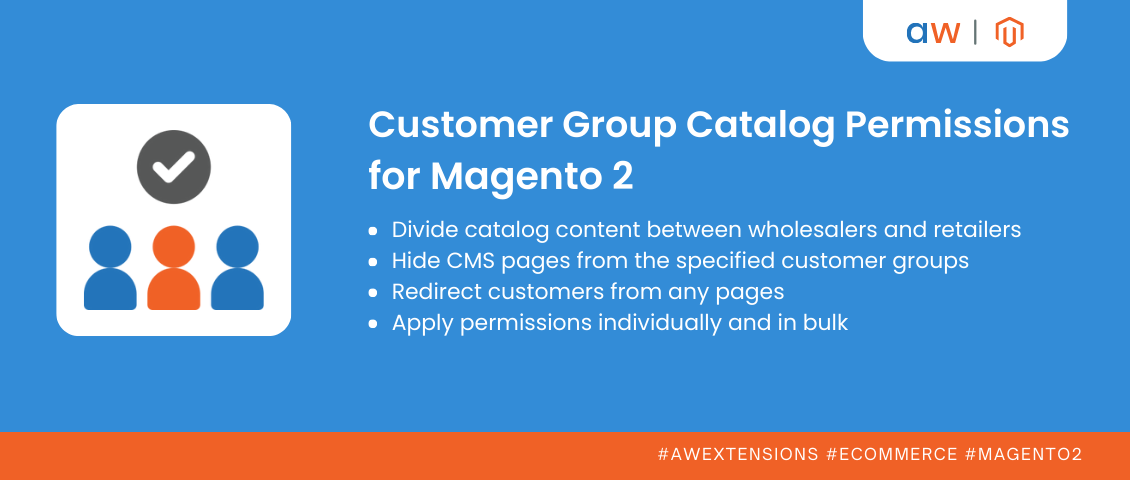
New Blog for Magento 2: Sway the Audience
Categorized as : Magento 2 Extensions
Since the beginning of 2015 and even earlier content marketing takes its place among most popular and demanded marketing strategies worldwide.

And, multiple observations notice that its huge influence on future marketing decisions will remain significant in 2016:
This way, content marketing is still a highly-effective marketing tool, and most of you definitely know this since our Blog extension is highly popular among our Magento 1 customers.
So, today we announce that Blog is good and ready for Magento 2 stores as well. And, it has a lot of new features and enhancements making it even more beneficial for your content marketing activities.
Of course, most features of the Blog extension are placed “under the hood”, but it has also obtained an updated interface and other functionality improvements obvious on the frontend.
In addition to getting new information customers and visitors are also able to stay engaged through navigating content via the categories menu, highlighted recent posts, and tags or sharing and commenting it in social media.

This edition of the extension is integrated with the Disqus comment hosting service and provides readers with multiple commenting options, including comment shares and recommendations, filtering, sorting and so on.
Most Magento 2 blog features are presented behind the scenes in the backend.
The module offers you two ways to start creating a blog post: using the main menu or the Posts grid. The most straightforward way is to follow Magento Backend Menu -> Content -> Blog by aheadWorks -> New Post. Or you can start posting from the Posts grid with the Create Post button, but this table is also useful for some more things.

The Posts grid enables you to walk through the whole list of blog posts, filter and sort posts, add and delete certain grid columns.
Each new post starts from its Title and URL-Key that may match each other or differ depending on your SEO needs. If the post is comparatively short, you can post it in full. Otherwise, you can specify a short description to be published on the main blog page, while the rest content will be fully available on the post page.
The prepared content can be posted immediately, saved as a draft or scheduled for a certain date, hour, and even second.
Next, you need to assign the blog post to corresponding blog categories and provide it with relevant tags. Depending on the content and language blog posts may also be assigned to the whole store or just to certain store views (e.g. English, German, French, etc.).

Finally, you need to enable/disable comments for posts and specify their Meta descriptions.
The Blog extension by aheadWorks introduces the Disqus commenting functionality for created posts. Still, this feature requires some presets on the admin’s side. Firstly, you need to create a personal account on Disqus and register Blog as a new application within it.
Successful application registration provides you with an application Secret Key you need to paste to the Disqus Secret Key field in the Blog extension General Settings section. Next, you need to define the name of your application in the Disqus admin panel, save it and paste to the Disqus Forum Code. Then click the Finish registration button and enjoy the provided functionality.

If you need some special settings for your comment sections, you can always set them up in the Disqus Settings area. Moreover, as a Blog administrator you can manage, edit, and reply to all provided comments.
The categories for blog posts are settled in the Category section of the Blog extension. A new category requires next attributes: Name, URL-key, Status, Sort Order, Meta Description, and Store View.
Last but not least or actually the first thing you have to proceed to right after the installation are the Blog settings. The Configuration page consists of three areas: General, Sidebar, and SEO.
The General area allows you to determine the rote to blog (main page URL), blog title, number of posts per one page, sharing buttons display options (posts, list of posts or both), Disqus forum code and secret key.
You can also specify the appearance of the Blog sidebar with the number of recent posts and most popular tags to display, popular tags and CMS blocks.

Finally, the SEO section consists of only one field you need to fill – Meta Description.
As far as we strive to make our Magento 2 Blog extension really useful and handy, we'd appreciate your feedback regarding its functionality and use cases sent to our Help Desk.
All necessary information on the Blog module you will find on its product page in our M2 store. The Readme file of the extension contains detailed information regarding its settings and backend features.
Explore, evaluate and purchase the Blog extension for Magento 2 stores.

And, multiple observations notice that its huge influence on future marketing decisions will remain significant in 2016:
- Content marketing is considered to be the marketing activity with the second greatest commercial impact in 2016 (Source: Smartinsights.com);
- The content marketing industry tops the list of important tech investments in 2016 (Source: blog.winmo.com);
- 64% of PR and marketing pros are inclined to increase their content marketing spending this year (Source: Neilpatel.com);
- Nearly 50% of companies have content marketing strategies in their marketing mixes in 2016 (Source: Jeffbullas.com).
 Blog for Magento 2
Blog for Magento 2
This way, content marketing is still a highly-effective marketing tool, and most of you definitely know this since our Blog extension is highly popular among our Magento 1 customers.
So, today we announce that Blog is good and ready for Magento 2 stores as well. And, it has a lot of new features and enhancements making it even more beneficial for your content marketing activities.
Frontend Facilities
Of course, most features of the Blog extension are placed “under the hood”, but it has also obtained an updated interface and other functionality improvements obvious on the frontend.
User Interface
In addition to getting new information customers and visitors are also able to stay engaged through navigating content via the categories menu, highlighted recent posts, and tags or sharing and commenting it in social media.

Front End View
Disqus Comments
This edition of the extension is integrated with the Disqus comment hosting service and provides readers with multiple commenting options, including comment shares and recommendations, filtering, sorting and so on.
 Note: In order to leave comments customers should have a Disqus account or login to the service via Facebook, Twitter or Google+.
Note: In order to leave comments customers should have a Disqus account or login to the service via Facebook, Twitter or Google+.
Backend Functionality
Most Magento 2 blog features are presented behind the scenes in the backend.
Posts
The module offers you two ways to start creating a blog post: using the main menu or the Posts grid. The most straightforward way is to follow Magento Backend Menu -> Content -> Blog by aheadWorks -> New Post. Or you can start posting from the Posts grid with the Create Post button, but this table is also useful for some more things.

Posts Grid
The Posts grid enables you to walk through the whole list of blog posts, filter and sort posts, add and delete certain grid columns.
Each new post starts from its Title and URL-Key that may match each other or differ depending on your SEO needs. If the post is comparatively short, you can post it in full. Otherwise, you can specify a short description to be published on the main blog page, while the rest content will be fully available on the post page.
The prepared content can be posted immediately, saved as a draft or scheduled for a certain date, hour, and even second.
Next, you need to assign the blog post to corresponding blog categories and provide it with relevant tags. Depending on the content and language blog posts may also be assigned to the whole store or just to certain store views (e.g. English, German, French, etc.).

New Post Area
Finally, you need to enable/disable comments for posts and specify their Meta descriptions.
Comments
The Blog extension by aheadWorks introduces the Disqus commenting functionality for created posts. Still, this feature requires some presets on the admin’s side. Firstly, you need to create a personal account on Disqus and register Blog as a new application within it.
Successful application registration provides you with an application Secret Key you need to paste to the Disqus Secret Key field in the Blog extension General Settings section. Next, you need to define the name of your application in the Disqus admin panel, save it and paste to the Disqus Forum Code. Then click the Finish registration button and enjoy the provided functionality.

Disqus Registration
If you need some special settings for your comment sections, you can always set them up in the Disqus Settings area. Moreover, as a Blog administrator you can manage, edit, and reply to all provided comments.
Categories
The categories for blog posts are settled in the Category section of the Blog extension. A new category requires next attributes: Name, URL-key, Status, Sort Order, Meta Description, and Store View.
Configuration
Last but not least or actually the first thing you have to proceed to right after the installation are the Blog settings. The Configuration page consists of three areas: General, Sidebar, and SEO.
The General area allows you to determine the rote to blog (main page URL), blog title, number of posts per one page, sharing buttons display options (posts, list of posts or both), Disqus forum code and secret key.
You can also specify the appearance of the Blog sidebar with the number of recent posts and most popular tags to display, popular tags and CMS blocks.

Blog Configuration
Finally, the SEO section consists of only one field you need to fill – Meta Description.
Conclusion
As far as we strive to make our Magento 2 Blog extension really useful and handy, we'd appreciate your feedback regarding its functionality and use cases sent to our Help Desk.
All necessary information on the Blog module you will find on its product page in our M2 store. The Readme file of the extension contains detailed information regarding its settings and backend features.
Explore, evaluate and purchase the Blog extension for Magento 2 stores.











